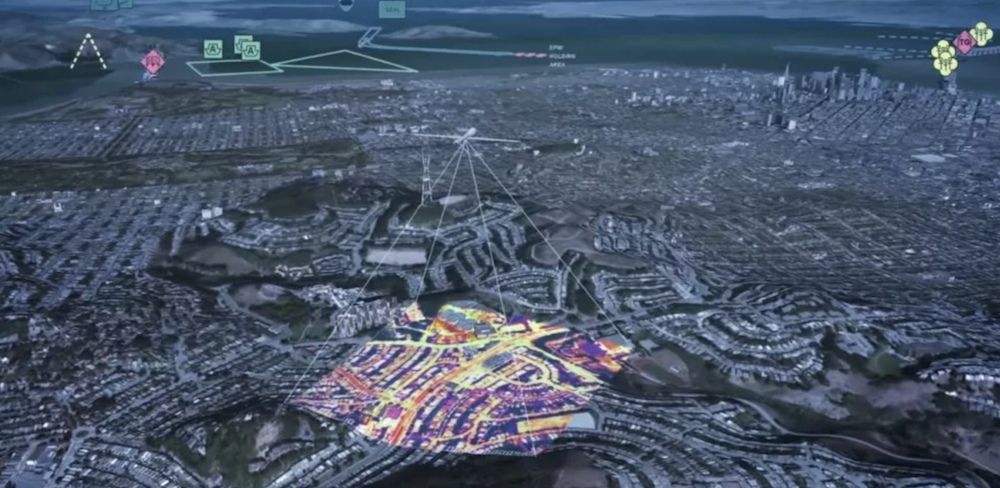Editor’s note. Not good.
China has obtained the big screen software used by Nato and the United States for war room mapping, putting its forces on an equal organisational footing with some of the West’s elite military operations.
Luciad, a defence contractor based in Leuven, Belgium, is selling the Chinese government high performance software used for situational awareness by the military commands of the North Atlantic Treaty Organisation, according to information from Chinese government contractors verified by the South China Morning Post.
The package includes LuciadLightspeed, a program that can process real-time data, including that from fast-moving objects, with speed and accuracy.
Situational awareness is the ability to know what is happening in a target environment and use that intelligence to defeat the enemy. In warfare, the situation is so fluid it can change in seconds.
Planners use data from sources such as drone feeds, satellite imagery, radar, sensor plots, weather forecasts and platoon status. Traditional software can introduce errors as large as 500 metres (1,600 feet) in the positioning of moving targets from different datastreams.
Luciad’s software can analyse data and generate seamless visuals at a speed of 100 calculations a second, 75 times faster than its closest competitor, with accuracy to within 3cm (one inch) and on a global scale, according to American graphics technology company Nvidia.
This allows planners to visualise and analyse changes in enemy positions or assess target information in real time and adjust mission parameters accordingly, according to Nvidia.
The same software is used by the United States Special Operations Command at MacDill Air Force Base in Tampa, Florida, where covert missions for the US government – including the raid that assassinated al-Qaeda leader Osama bin Laden in Pakistan in 2011, originated.
Under Chinese law, a foreign vendor supplying software to the Chinese government must disclose every line of source code to authorities for a security check. It was unclear whether Luciad has complied with that requirement. The company did not respond to requests for comment.
Adopting technology used by Nato in military command may not be without risk to China, according to a Beijing-based information security expert who has worked with the government.
The software might contain hidden codes. “It can lead to unauthorised infiltration of the brain of Chinese military operations,” the researcher said.
Although the military network was physically isolated from the internet and protected by firewalls, there was “always a possibility of finding a way in and bypassing all security checks”, he said.
Alternatively, studying the software, especially at source-code level, would offer China a perspective on the war room operations of Western powers.
“Sometimes a comment [an explanation or annotation in the source code of a computer program] can tell a story,” the researcher said.
China operates one of the world’s largest military intelligence gathering systems and its sophistication is increasing. It has an expanding network of satellites – most of which serve the government or the People’s Liberation Army – that is second in number only to the US.
Monitoring devices are planted in the world’s oceans from the South China Sea to the American West Coast. Conventional weapons such as landmines are evolving with the use of artificial intelligence.
The Chinese military and intelligence services monitor civilian sectors including the internet, surveillance camera networks and social media for information and threat analysis.
This creates a large and urgent demand for advanced data processing software, according to industry experts.
“Luciad is the Ferrari of GIS software. It comes to the right place at the right time,” said a geospatial information engineer from an aerospace company in Beijing.
Over the past few months, senior technical staff with the Chinese government and major contractors have taken crash courses on the new software in Beijing.
One was hosted in June by Key Mapper, a geospatial information service provider in China. In one exercise, a tutor from Luciad provided data on San Francisco to demonstrate the software’s function.
“Through this training, the participants not only have a deep understanding of Luciad’s full range of products, but can also independently use the products to develop related applications,” the company said on its website.
Key Mapper confirmed on Monday that it was an official reseller of Luciad software licensed to Chinese government clients.
The Beijing-based company declined to disclose further details because of the sensitivity of the technology.
Luciad was established by Dr Lode Missiaen, a senior scientist who had worked at the Nato Consultation, Command and Control Agency in The Hague, the Netherlands, in the 1990s.
Missiaen, responsible for the development and application of modern software technologies for Nato’s air traffic control and airspace management, recognised the lack of commercial software that could combine geographic and real-time information.
He left Nato and founded Luciad in 1999 to fill the gap, but it was not until 2008 that Nato fully adopted the new technology at its command centres to generate pictures for big screen display in war rooms.
Luciad’s software is now used not only by Nato member nations but also by major arms contractors, including Boeing, Airbus Defence and Space, Lockheed Martin and Thales.
The company was bought last year by Hexagon, a technology group based in Sweden.
Hexagon has established ties with the Chinese military and defence industry. Its technology has been used by the manufacturer of China’s stealth aircraft.
It was unclear whether the Luciad software sale in China occurred after the acquisition. Hexagon did not respond to the Post’s queries.
Professor Wu Lun, director of the geographic information systems department at Peking University and a senior adviser to the Chinese government on geospatial information technology, said the most popular foreign GIS platform in China at present was ArcGIS, a commercial software developed by the Environmental Systems Research Institute in California.
While it had some military application, “ArcGIS is mainly used for civilian projects”, he said.
For security concerns, the Chinese government has promoted home-grown GIS software for government and military applications, and some suppliers such as SuperMap and MapGIS had come up with “quite capable and competitive products”, he said.
“But different clients have different demands. Foreign and domestic software will coexist for a long time,” Wu said.












